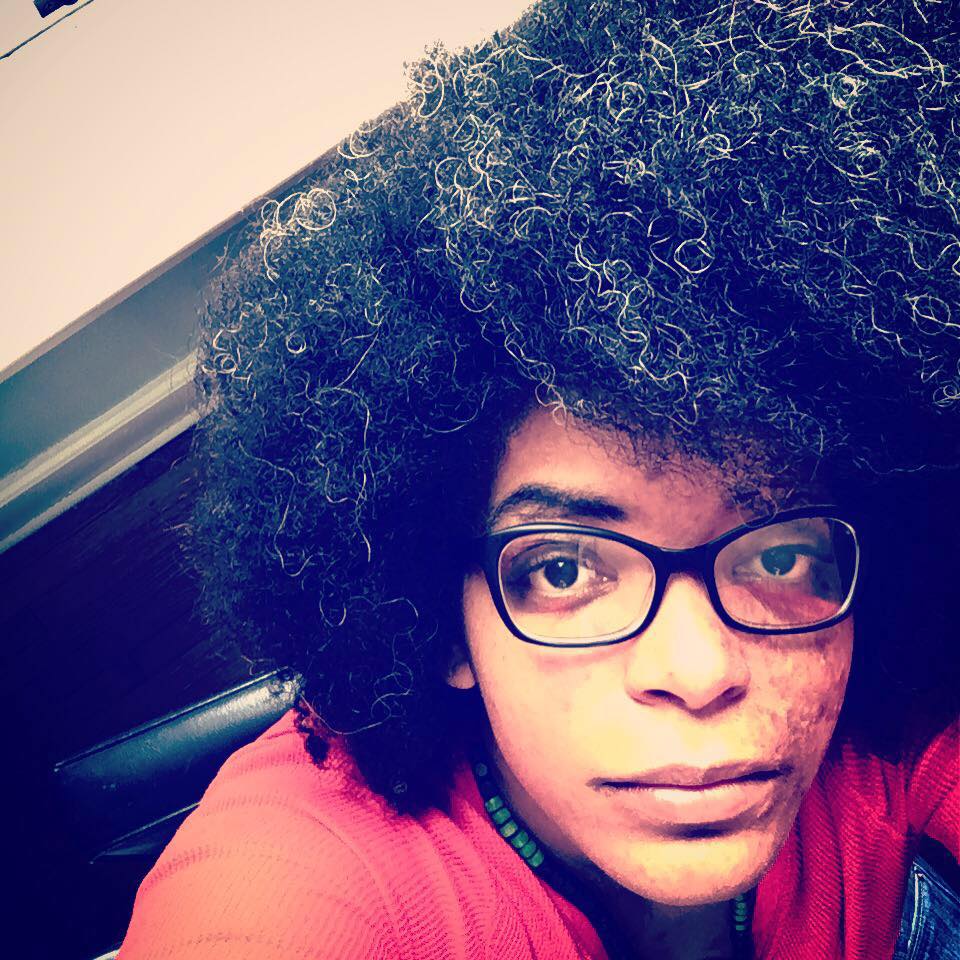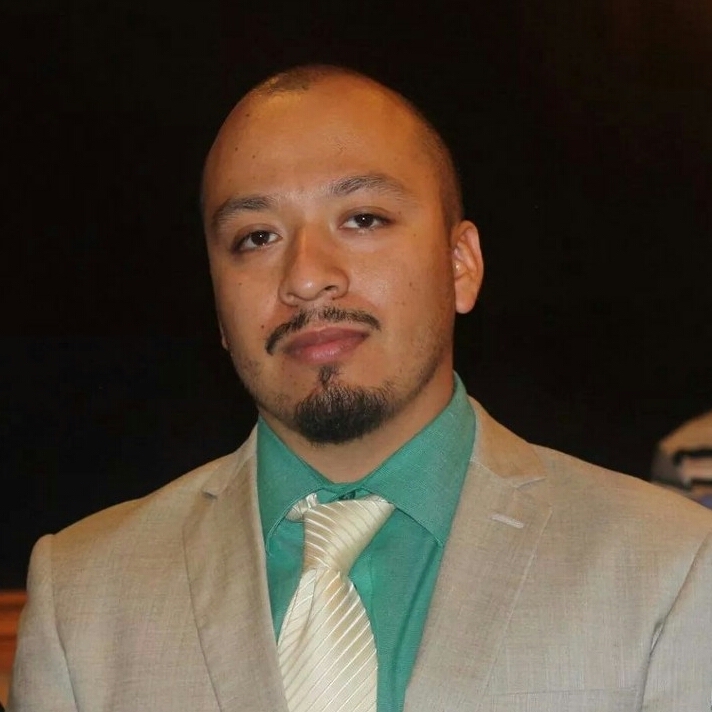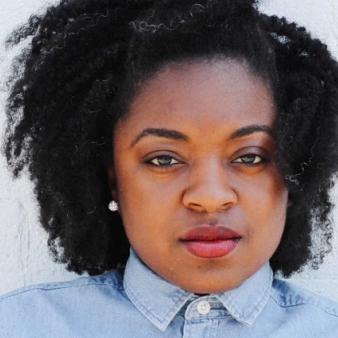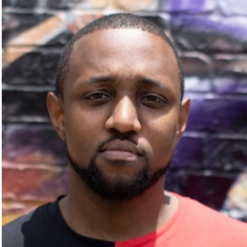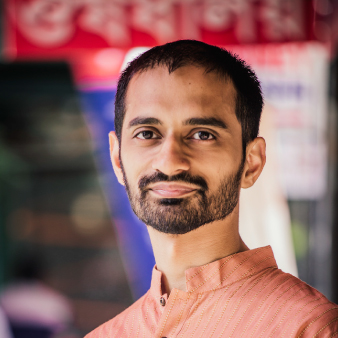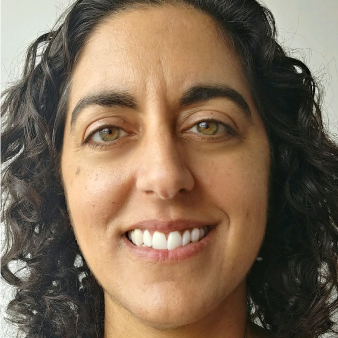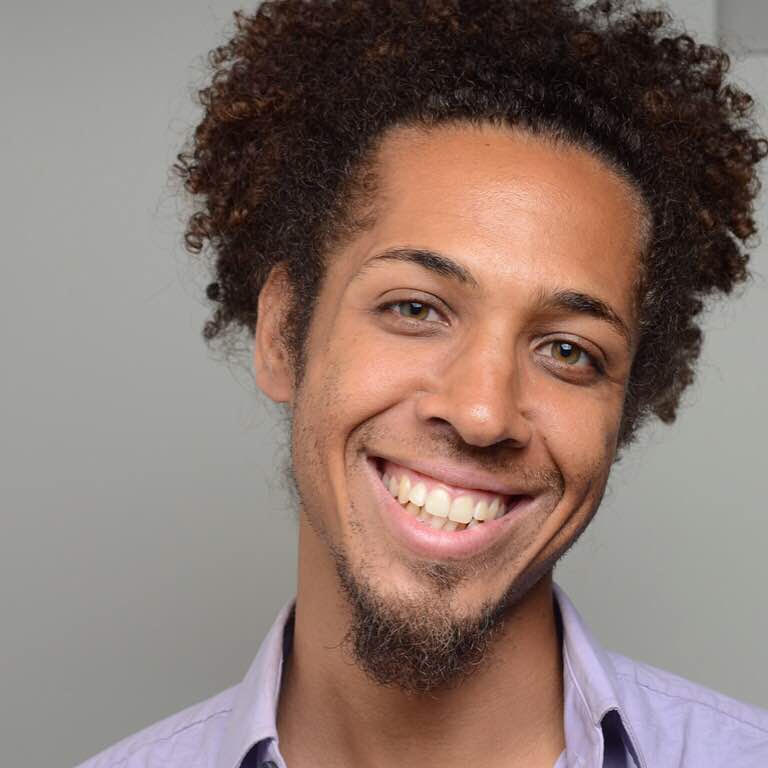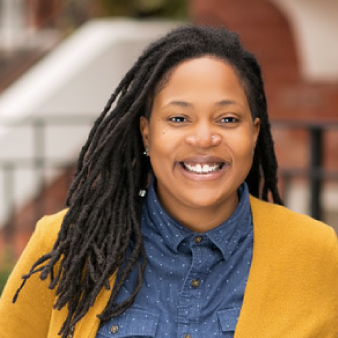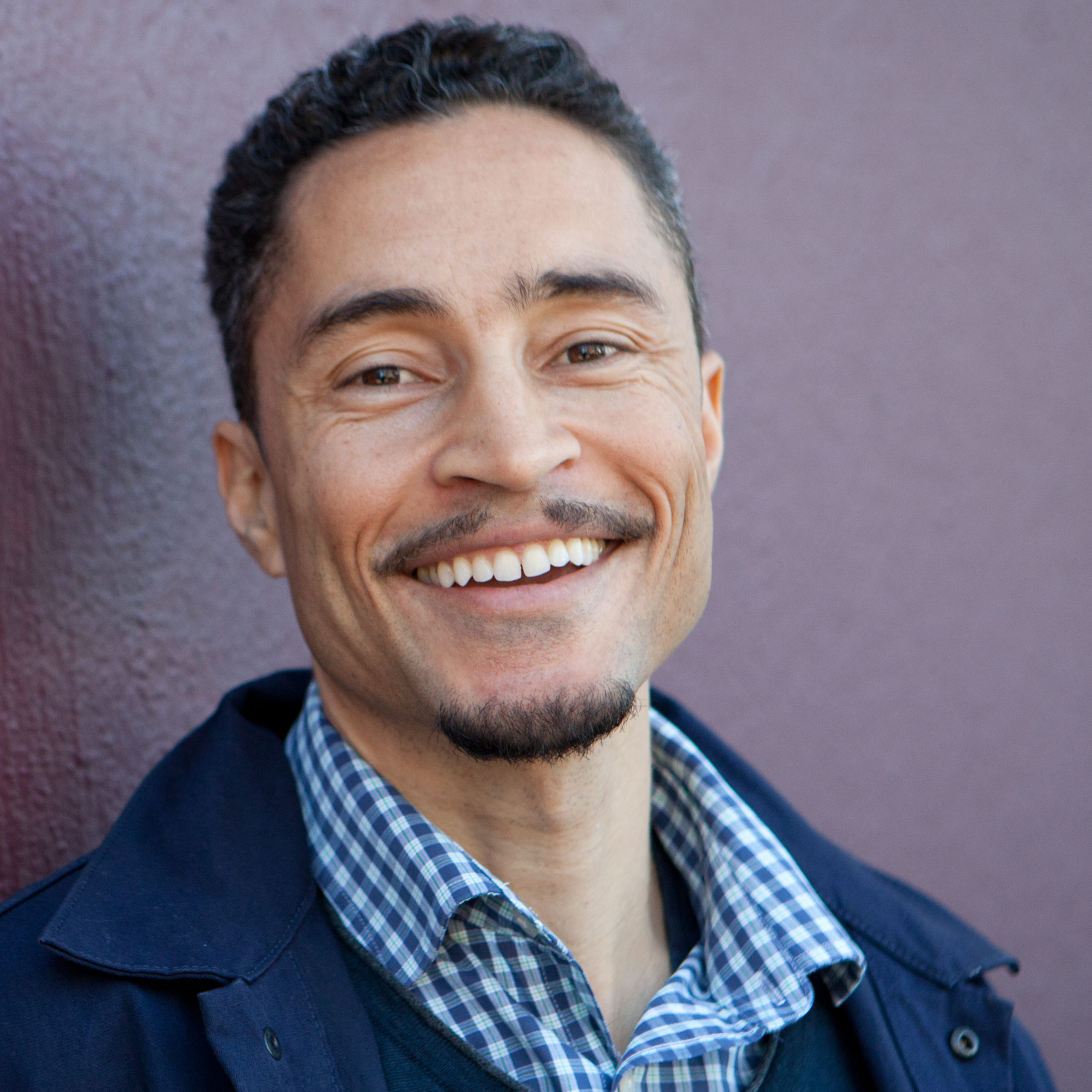Institutions and Identities Drive Criminalization
Source: The Crisis of Mass Criminalization: A Call for a Comprehensive Philanthropic Response, written by Andrea J. Ritchie and Beth E. Richie, and published in 2017.
Funders for Justice created this website for funders because we believe that our collective investments in housing, education, health, transportation, food security, and jobs will fail if we do not also proactively work to divest this nation’s resources from criminalization. Our partners in the field are organizing for divestment from the prison industrial complex, and understand that as critical to the work of transforming communities to be truly safe and secure. This website is a toolkit for grantmakers, donors, and funder affinity groups, to help funders in confronting criminalization. On this website, you’ll find a grid of many of the classic funder silos – click one of the buttons to see how criminalization intersects with your funding areas. We ask you to listen, learn, and take action. Download a printable PDF version of the website and toolkit here.
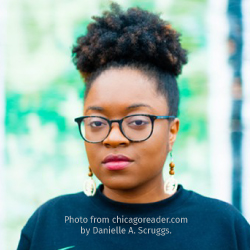
Video: Slavery to Mass Incarceration, an animated short film by acclaimed artist Molly Crabapple, with narration by Bryan Stevenson, Equal Justice Initiative. From the Equal Justice Initiative:
The film illustrates facts about American slavery and the elaborate mythology of racial difference that was created to sustain it. Because that mythology persists today, slavery did not end in 1865, it evolved… Slavery to Mass Incarceration is part of EJI’s Racial Justice project, which explores racial history and uses innovative teaching tools to deepen our understanding of the legacy of racial injustice. By telling the truth about our past, EJI believes we can create a different, healthier discourse about race in America.


In this video, Marbre Stahly-Butts of Law for Black Lives and Funders for Justice Field Advisor introduces the Divest/Invest frame. Read the full transcript here.
Marbre tells us: “…[I]n this moment [divest/invest is] such a key intervention in addressing not just the symptoms that need to be faced but the root causes of them…. invest/divest is the idea that as we’re making reforms, as we’re pushing policy changes, as we’re overseeing shifts in practice, that we pay special attention to how money is being spent, and we demand a divestment from the systems that harm our communities, like the criminal legal system, like policing regimes, like the court system, and demand that money that’s currently being spent, that’s being poured into those systems with no accountability, be moved instead to community-based alternative systems that support our people, that feed our people, that ensure we have jobs, and housing – the things we need to take care of ourselves and our communities. … [I]nvest/divest is meant not just to address the symptoms of that, not just to address criminalization, or bail crisis or sentencing crises, but instead to say “Actually, how do we start to really think about how we reallocate power and resources back to our safety, back to our health, in ways that help us thrive, and don’t criminalize or dehumanize us.”
Additionally, read Freedom to Thrive: Reimagining Safety & Security in Our Communities, a report written by Law for Black Lives, BYP100, and Center for Popular Democracy, which gives budget numbers from a dozen cities and counties across the country, and features divest/invest campaigns in each of these places.
We ask you to consider funding the local, regional, and national campaigns that move public dollars out of policing, prisons, and immigrant detention centers, and directly into the public safety net and infrastructure that actually keep our communities safe: quality, affordable public education, housing, healthcare, infrastructure, childcare, etc. This includes meaningful job opportunities that build the collective wealth and power of communities of color and low-income communities, rather than extracting the wealth and vitality and funneling it to corporations and the wealthy elites that own them.
Read through the grid below to learn how criminalization affects different community issues and check out examples of Community Safety & Justice in Practice. Write to Funders for Justice to learn more and take action.
An initiative, project, or campaign is divest/invest if it:
1. Divests from the systems that harm and kill communities. These projects move resources and people out of any of the criminal justice system bureaucracies – like police, prisons, detention centers, courts, bail bond companies, etc.
2. Brings new ways of being into life. These projects move resources into community-centered safety or justice, as visioned and implemented by communities most impacted by criminalization
Youth & Education
While the education system has long reflected and perpetuated the racial inequities of the surrounding community, schools serving predominantly Black and Brown children became sites of active criminalization in the mid-1990’s, when “zero tolerance” policies to keep guns out of schools were expanded to include drugs or alcohol, fights, threats, cursing, and defiance. These “offenses” led to a rapid increase in suspensions. Even a single suspension makes a student almost three times as likely to come into contact with the juvenile justice system within the year. The overuse of suspensions for normal adolescent behavior did not make schools any safer, while harming students’ overall academic achievement. In addition, racial disparities have been glaring, with Black students three times more likely to be suspended or expelled than white students, even for the same offenses.
These dynamics create the school-to-prison pipeline, where some students are denied an opportunity to succeed, and instead are pushed out of school and into the juvenile or criminal justice system. According to the Dignity in Schools campaign, while the complete emotional, social and financial impact of daily police presence in schools is not fully understood, it is clear that students and their families are criminalized, and that school-based arrests and referrals to law enforcement go up when police have a regular presence in schools. Visit the Counselors Not Cops: Ending the Regular Presence of Law Enforcement in Schools page to learn more about their recommendations to create safe schools.
In some districts, certain behaviors are automatically referred to the police when they occur on school property, resulting in arrests and convictions. Other policies engage students as presumptive criminals, subjecting them to searches, dogs, metal detectors, video surveillance, and “line-up” policies modeled on the movement of prisoners inside a prison. School police have become a normalized fixture on a school campus. School budgets consistently prioritize funding for school police over more positive supports such as nurses, mental health professionals, or counselors.
Many schools have fought to defund and remove police from their campus, and this work continues in the uprisings and fight for racial justice sparked after the murder of George Floyd in 2020. The Police-Free Schools Movement is being mapped by Girls for Gender Equity.
Outside of schools, youth of color, particularly in Los Angeles and Chicago, are subject to gang injunctions and gang databases.
Dignity in Schools’ Counselors Not Cops campaign calls on school districts to remove any law enforcement assigned to be present on a regular basis in schools. Youth in Chicago Education (VOYCE, a program of Communities United), Community Organizing and Family Issues (COFI), and Illinois Safe Schools Alliance did not remove all police, but did in 2013 have Chicago cut their school police budget in half. Founded in 2005 to replace punitive school discipline with restorative approaches that actively engage families and communities to repair harm, Restorative Justice for Oakland Youth is using its successes in Oakland’s schools to push for a larger societal shift away from punishment-based justice. Black Organizing Project won their ten-year organizing campaign to get police out of Oakland schools. Other grassroots organizations organizing in schools around divest/invest principles include Padres & Jovenes Unidos (Denver, CO), Power U Center for Social Change (FL), Friends and Families of Louisiana’s Incarcerated Children, the RYSE Center (Richmond, CA), Alliance for Quality Education (NY), Education Justice Alliance (NC), Philadelphia Student Union (PA), Teachers Unite (NY), Urban Youth Collaborative (NY), Power U Center for Social Change (FL), Baltimore Algebra Project (MD), Girls for Gender Equity (NY), Gwinnett SToPP (GA), PrYSM (RI), Rethink (LA), Brighton Park Neighborhood Council (IL), Leaders Igniting Transformation (WI) and Racial Justice NOW (OH).
Criminal Justice Reform
The United States’ criminal legal system is made up of a vast, interconnected complex of prisons, jails, police departments, courts, probation, parole, and databases. Because it promises to deliver justice and keep us safe, we have been willing to pay over $300 billion a year to keep all the components of this system well funded. Recognizing the harm done (particularly to Black, Indigenous, and other communities of color), criminal justice reforms seek to make fixes to different parts of the criminal legal system. This includes efforts to reduce the incarceration rate, improve conditions of confinement in prisons and jails, end solitary confinement, end the death penalty, ensure quality indigent defense, reduce police misconduct, and ameliorate the impacts of persistent criminal records. Unfortunately, many criminal justice reforms end up strengthening and enlarging the institution it is trying to reform. Reforms to prevent police abuses, for example, have resulted in tens of millions of tax dollars allocated for body-worn cameras, which have failed to change police behavior, while offering the police a powerful new platform for mass surveillance (when loaded with facial recognition). An increase in non-lethal weapons has increased market opportunities for makers of such devices, with little evidence of any decrease in deaths caused by police shooting guns. Similarly, prison reforms to improve conditions of confinement usually result in increased budgets, or new prisons being built, and ultimately create a financial incentive for filling beds.
In an ever shifting policy and movement environment, how can the changes we fight for be grounded in divestment rather than reform that bolsters the system of policing? Mariame Kaba offers insight in Police “Reforms” You Should Always Oppose. Critical Resistance has a great resource chart with specific examples on reformist reforms vs. abolitionist steps in policing.
Divest/invest criminal justice reform campaigns avoid the problem of enlarging a harmful system by making the system’s diminishment an explicit, primary goal. Experience shows how critical it is for funders to support community organizations that can ensure the dollars saved are reinvested in community programs. When California voters in 2014 passed Proposition 47 to reclassify certain felony crimes as misdemeanors and send state funds to counties for treatment and prevention, the divest/invest strategy was most successful where the Ella Baker Center, Communities United for Restorative Youth Justice, and other community organizations worked to ensure the treatment and prevention dollars were not absorbed by the local sheriff, and went instead to community groups and non-criminal justice agencies.
Groups are organizing to shift resources away from the carceral system and back into communities by closing jails and prisons. The Close the Workhouse campaign, a collaboration between the Arch City Defenders, Action St. Louis, and the Bail Project, calls for the closure of the Medium Security Institute (better known in St. Louis as the Workhouse), an end to wealth based pretrial detention, and the reinvestment of the money used to cage poor people and Black people into rebuilding the most impacted neighborhoods in this region. After stopping a new jail from being built in 2015, No New SF Jails coalition has worked alongside city players to try to bring down San Francisco’s jail population in order to close County Jail #4 at 850 Bryant without constructing or reopening any new jails, expanding imprisonment through out-of-county-transfers, increasing policing or surveillance through electronic monitoring. Close the Jail ATL: Communities Over Campaign, a coalition in Atlanta with over 50 members, organized and won the fight to defund and close the local jail.
The member organizations that make up the FICPFM (Formerly Incarcerated or Convicted People and Families) Movement are led by those most impacted by criminalization. These organizations are engaged in a range of criminal justice reforms to expand employment, housing, and voting rights.
Community Development
Million dollar blocks describe places where more than a million dollars a year are spent locking people up from a single city block. From the perspective of community development, it is clear that the money spent incarcerating people from the neighborhood would be far better spent on preschool, public education, housing subsidies, or programs to increase economic opportunities. Additionally, when Black and low-income neighborhoods start to gentrify, newcomers use the police to create the kind of social order that is more appealing to the wealthier class of buyers. Arrests and prosecutions of Black and Brown people for minor offenses increase when neighborhoods undergo gentrification.
Criminalization and incarceration have had a devastating impact on Black and low-income neighborhoods across the country. When a large number of adults from a neighborhood move in and out of prison and jail, the disruptions weaken familial and social relationships, imposes severe material hardships on those imprisoned, and undercuts resilience by undermining the cultural fabric of a neighborhood. The Who Pays? The True Cost of Incarceration on Families report shares how incarceration saddles loved ones with overwhelming debt – for example, 48% had trouble meeting basic housing needs because of the financial costs of having an incarcerated loved one. It has become clear that the high rate of incarceration, rather than protecting residents from harmful individuals, actually does the opposite, making a neighborhood less safe.
Communities United is a grassroots organization founded in Chicago’s Albany Park to preserve affordable housing, increase access to healthcare, and increase youth employment. Its Re-Imagine Justice Illinois is a statewide campaign to shift taxpayer dollars away from incarceration, reallocating the savings to programs that address the root causes of crime and build healthier and safer communities.
In New York City, Queens Neighborhood United is a community-based organization seeking to “establish democratic control over land-use, policing, and immigration policies.” Part of QNU’s mission is to “build power to fight criminalization and displacement in our communities.”
Civic Engagement
The over policing of communities that are predominantly Black, Indigenous, and people of color creates a high barrier to civic engagement. Efforts by residents to work together to solve community problems and improve the quality of life are undermined by criminalization of communities of color that creates high rates of incarceration, probation and parole requirements, that fines and costs the justice system extracts for traffic and public order offenses, and a heavy police presence.
Criminalization lessens civic engagement by limiting the right to vote. The single most significant structural barrier to full suffrage is felony disenfranchisement: at the time of the 2016 elections, a felony conviction barred 6.1 million people from being able to vote. Further, due to the placement of many prisons in rural areas and the disproportionate incarceration of people of color, younger prisoners of color are used to boost the political weight of whiter, more conservative rural areas. Additionally, by counting prisoners as residents of the county where the prison is located, the U.S. Census gives disproportionate power to rural, largely white, counties that contain prisons.
Those in power have a history of using criminalization to actively discourage civic engagement, particularly when a community’s activism is focused on police misconduct or other ills of the criminal legal system. The FBI, for example, created the term “Black Identity Extremist” to intimidate people who are taking action against the police killings of Black people.
A civic engagement process for divest/invest could be participatory budgeting, which directly engages residents in the allocation of public funds. In a participatory budgeting process, a pot of public money is set aside and residents, through committee, proposals, and direct voting, determine how to allocate those resources. The Movement for Black Lives included participatory budgeting in its policy platform. The Participatory Budgeting Project is working with partner organizations to democratize police and criminal justice budgets. There are numerous, robust campaigns to restore the vote for people with criminal convictions. The Florida Rights Restoration Coalition is pushing a ballot initiative to restore the vote to over 1.5 million people. Efforts led by formerly incarcerated people in Alabama recently resulted in a limitation of crimes that disqualify a person from exercising his or her right to vote. California in 2016 passed legislation allowing those in county jails to vote while incarcerated, and Virginia Governor Terry McAuliffe responded to pressures to restore the vote by issuing an executive order automatically restoring voting rights those who have completed their sentence.
Transportation
Both public and private modes of transportation are heavily impacted by criminalization. A number of lawsuits brought in the late 1990s established that police were engaged in racial profiling when deciding who to pull over in routine traffic stops. The phrase “driving while Black” became shorthand for racial profiling, and was quickly expanded to include recognition of profiling of those “walking while Black,” “biking while Black,” “driving while brown,” and “walking while trans.” On public transportation, those who cannot pay their fare are often criminalized and fined, with disproportionate enforcement and sometimes police violence toward people of color. There are particular concerns in New York with how police enforce fare evasion. When a city creates or expands a light rail system, it usually causes mass displacement of usually low-income Black and brown residents and small businesses, which means people lose their homes, their businesses, and their jobs. Then, a private company operates the light rail with little oversight and accountability, and may welcome in police who then harass and arrest riders.
The much criticized practice of broken windows policing strategies relies on a speculative (and in fact never established) link between low-level offenses like spitting on the sidewalk and crimes like assault. This kind of policing occurs almost exclusively when someone in the targeted group is moving from one place to another, whether on foot, in a car, or on public transportation.
Justice Committee, Communities United For Police Reform, and Black Youth Project 100 are working on issues of criminalization and fare evasion in New York City.
Chainbreaker is a membership-based economic and environmental justice organization working to expand access to affordable transportation and sustainable communities for working people in the Santa Fe, New Mexico region.
Public Health
Incarceration harms individual and public health. Chronic stress, poor nutrition, physical and sexual assault by by detention officers, poor sleep and hygiene, lack of or delayed access to medical services, and increased exposure to communicable diseases are all part of daily life when incarcerated. Many of these health impacts are present for those on probation or parole, where fines, fees, check-in requirements, and other facets of the surveillance of probation or parole often increase stress and interfere with health care. The dire impact on health and inability to provide care for incarcerated people is especially evident in the COVID-19 pandemic in 2020, as many facilities did not provide appropriate personal protective equipment and it is impossible to socially distance in jails and prisons. This resulted in preventable outbreaks and deaths of incarcerated people in many facilities, including San Quentin.
People with mental health challenges are especially hard hit. Many of the individuals locked up for public disorder offenses or other minor violations are arrested for behaviors stemming from unmet mental health needs. Once detained, their condition often worsens, increasing the likelihood they will be re-arrested for a new offense upon release. As a result, there are now ten times as many people with severe mental illnesses in prison and jails than there are in hospitals.
This absurd and inhumane situation can be readily remedied by shifting resources from the criminal justice system to high quality, community-based, outpatient mental health services. Public health research about how inequity and experiences of racial discrimination impact mental and physical health confirm that criminalization has measurable and profound effects on individual health outcomes. These negative impacts, compounded by the scale of mass incarceration, makes criminalization a matter of public health.
From a health-centered perspective, the goal of divest/invest is to replace prison beds with community-based mental health services. Human Impact Partners have been leaders in examining how criminal justice practices negatively affect individual and public health. Through their Health Instead of Punishment initiative, HIP is partnering with grassroots groups “to build the capacity of public health agencies to engage in criminal justice reform.” In California, HIP’s Healthy and Safe Riverside County: Investing in What Works (2017) report started with the premise that “a budget is a moral document,” defining what a community believes in. The report presented public health approaches to safety, some embedded within the criminal justice system and others true alternatives outside the system. The Katal Center for Health, Equity, and Justice uses a harm-reduction approach in its work to end mass incarceration. Alongside Just Leadership, Katal was an organizational leader in the #CloseRikers campaign.
LGBTQ Rights
Criminal laws are enforced in a discriminatory manner against LGBTQ people. As a result, while 3.8% of adults in the U.S. identify as LGBTQ, the number of lesbian, gay, or bisexual people incarcerated is double that percentage. LGBTQ youth are especially hard hit, with approximately 20% of young people in juvenile detention facilities identifying as LGBTQ or gender nonconforming. And since criminalization targets Black people and other people of color, those suffering mental illness or addiction, and low-income people, the LGBTQ people of these targeted groups are doubly (or triply) impacted.
Nearly one in six transgender people (16%) (including 21% of transgender women) have been incarcerated at some point in their lives—far higher than the rate for the general population. Among Black transgender people, nearly half (47%) have been incarcerated at some point. Black trans women engaged in survival sex work are particularly hard hit by criminalization. They are perhaps the most heavily policed group within the LGBT community, while simultaneously the most at risk of being victims of violent assault or murder.
Once criminalized and enmeshed in the criminal legal system, queer, trans, and gender nonconforming people suffer more abuse at the hands of police, prison guards, other incarcerated people, and other criminal legal actors. Policies that isolate and stigmatize incarcerated people disproportionately affect LGBTQ individuals and are also more likely to experience assault and violence in prison. For example, nearly 60% of incarcerated trans women in California male facilities reported sexual assault. We also see this in the case of Ky Peterson, who was told that as a transman, he was not a “believable victim” of rape after defending himself against a brutal sexual assault, and he was bullied into signing a “plea deal” of 20 years in prison.
LGBTQ groups have responded to this biased enforcement and harmful police practices with research, advocacy, and grassroots organizing. These efforts have been bolstered by the publication of Queer (In)Justice: The Criminalization of LGBT People in 2011, Captive Genders: Trans Embodiment and the Prison Industrial Complex in 2015, and Unjust: How the Broken Criminal Justice System Fails LGBT People in 2016.
Since the early 1990s, a number of LGBT grassroots groups, many of them founded as anti-violence campaigns, have squarely confronted the criminalization of their members. These include the Community United Against Violence (CUAV), FIERCE, and the Audre Lorde Project’s Safe Outside the System program. Solutions Not Punishment, led by Black trans women, formed in response to a proposal that people convicted of prostitution be banished from the city of Atlanta. SNaP’s organizing not only stopped the new criminal law from passing, but forced the city to create (and fund) instead a pre-arrest diversion program that avoids arrest altogether. In New Orleans, BreakOUT!’s We Deserve Better campaign won an anti-profiling policy from the police. Southerners on New Ground’s Black Mamas Bailout Action was instrumental in sparking public interest in bail reform. In California, TGI Justice Project is a Black trans-led group of transgender, gender variant and intersex people, both inside and outside of prisons, jails and detention centers, organzing for survival and freedom. #MeToo Behind Bars is a grassroots campaign in response to abuse and violence from prison guards toward four incarcerated people who identify as transgender, gender non-conforming (GNC) or queer. The Transgender District in San Francisco’s Tenderloin neighborhood organizes to creating safe spaces for trans people that inspire economic advancement, leadership development and community. Among the LGBTQ legal organizations, the Transgender Law Center (TLC) and the Sylvia Rivera Law Project have been especially on point in understanding criminalization as a threat to LGBTQ people. TLC’s Detention Project provides individual support and seeks systemic policy changes on behalf of LGBTQ people who are incarcerated.
Labor
Police and prisons have a profound impact on the U.S. economy, the labor market, and working people, helping drive inequality in wealth, income and job quality along lines including race, gender, sexuality and ability. This traces back in part to the earliest days of the US legal system and colonialism, which hinged upon genocidal enslavement of Black and indigenous people enforced by colonial and enslaver patrols and institutionalized legal exclusion and exploitation of different immigrant populations, women, LGTBQ and disabled people. From the very first strikes in the US (as early as 1824) and across the history of the US organized labor movement, the police have been used to intimidate workers and block their efforts to collectively bargain for improved working conditions, benefits, and wages. At numerous junctures, like the rise of Justice for Janitors in the 1990s that centered migrant workers, or during the civil rights/public sector Black worker strikes of the 1960s, police have been directly deployed to stifle worker movements.
Since the 1970s, rather than funding social services or job-creation programs to deal with questions like unemployment and economic restructuring, police and prisons have become a stand-in that only worsens working conditions and rights on the job and often limits people to seeking low-wage or criminalized and precarious informal work (like street vending). Immigrant workers across industries face criminalization from the police, Immigration and Customs Enforcement and Customs and Border Patrol, compounded by regressive and xenophobic immigrant worker policy that renders these workers vulnerable and prevents many from speaking up in regards to basic labor protections and rights on the job. In prisons, workers, whether on behalf of the state (making license plates, working in the kitchen, fighting wildfires) or private corporations, are paid cents on the dollar. Formerly incarcerated people face discrimination when trying access employment, housing, and financial assistance for higher education, and fines, fees and parole tear into any prospects of savings. Companies like Amazon and others using temporary staffing agencies actively recruit recently-released worker for lower-paying, dangerous jobs. At a regional level, prisons and detention centers have actively targeted small town economies gutted by de-industrialization or agricultural change, pushing and keeping out better jobs while offering none of the economic benefits promised.
Groups like Warehouse Workers United organize formerly-incarcerated workers in Amazon and other logistics warehouses to take on their exploitation via temporary staffing agencies and who are subject to parole and other criminalizing surveillance. Workers Center for Racial Justice in Chicago have centered the leadership of formerly-incarcerated Black workers, creating programs that reimagine safety while fighting for legislation that includes retroactive reclassification of crimes and incentivizes hiring of recently-released people. The New Orleans Worker Center and National Day Labor Organizing Network members have launched or joined with anti-criminalization efforts to protect their members from aggressive policing, arrests, and detention, including municipal fines and fees that further poverty. United Food and Commercial Workers locals, along with other partners like United Domestic Workers (affiliated with AFSCME), have organized in support of legislation for changing criminalizing laws (like cannabis legalization) and held expungement clinics for people to clear their records, as well as immigration legal support clinics. Other locals like those by the IBEW provide recently-released residents access to training and union jobs and participation, and teacher unions like Chicago Teacher’s Union have fought to implement restorative justice practices in school that do not criminalize young people in the classroom. At the same time, groups like Freedom to Thrive (formerly Enlace) are helping union members organize to divest their pensions from prisons and create more partnerships among abolition and labor groups. Independent organizing efforts like the North Carolina Prison Workers Union have led prison labor strikes in 2016 and beyond to challenge the enslavement that occurs within prison walls. Local Labor Councils like that in Sioux Falls AFL-CIO and grassroots labor groups like Labor Notes are also leading new work asking: how can labor advance movements to divest in police and invest in community? In Minneapolis and elsewhere, unions have answered this question in different ways: SEIU Local 284 have supported challenging ties to the institutions where they work (in this case, getting rid of school contracts with police in Minneapolis); worker centers like CTUL have supported divestment from police in the local budget; and the local Minneapolis AFL-CIO have challenged police union power.
Restore Oakland, a joint initiative between Ella Baker Center for Human Rights and Restaurant Opportunities Centers United (ROC United), is a community advocacy and training center that builds community and economic power, provides job training and placement, and business incubation.
Juvenile Justice
In theory, the principle that children who break the law should be treated differently from adults allows for the care and positive growth of young people in lieu of punishment. In fact, however, the first juvenile justice court was established in 1899 in Chicago. It was largely in response to the influx of Eastern European immigrants and Black families to U.S. cities, whose children were considered prone to deviant behavior. Concurrent with the “tough on crime” rhetoric of the 1980s, juvenile courts became more punitive, and in the 1990s many states passed mandatory sentencing laws and increased transfers to adult courts for certain crimes. As advocates and litigation brought the violence of juvenile prisons into public view, a movement to close the worst prisons gained steam. When parents of the children were brought into the advocacy effort, they insisted that the resources expended to incarcerate their children must “follow the child.” That is, resources to address the child’s needs should follow the child out of the youth prison to support community-based services. Strategic advocacy has produced extraordinary results, with the youth incarceration rate now half of what it was at the system’s peak in 1997.
However, racial disparities are getting worse, with Black youth more than five times as likely to be detained or committed compared to white youth. Native youth are approximately three times more likely to be confined than white youth. The incarceration of young people is still a priority in public budgets: in 2020 amidst the COVID-19 pandemic, Alameda County in California chose to invest an additional $75 million dollars to the budget of Camp Sweeney, a juvenile detention facility, rather than investing “in safety net and community support and care so young people can have what they need to live and thrive outside of the justice system.”
The time is right for grassroots-led campaigns to close youth prisons: in a 2017 poll, 61% of Californians support or strongly support the proposition that “we shouldn’t have youth prisons at all, and instead invest in holding young people accountable for wrong-doing in ways that don’t involve incarceration.” Nearly 90% prefer a restorative justice approach over punishment as a response to crimes committed by youths.
Youth Justice Coalition in Los Angeles has from its inception worked to dramatically reduce youth incarceration, and to “transfer public resources to community-based, owned and operated alternatives to arrest, court, detention and incarceration.” Its LA for Youth campaign demands the city establish a Youth Development Department, funded by diverting 5% of law enforcement resources. In Oakland, Communities United for Restorative Youth Justice (CURYJ)’s “Close Youth Prisons, Build Youth Leaders” campaign is organizing young adults from Alameda County to imagine and build alternatives to youth incarceration. In Chicago, Project NIA is a grassroots organization founded in 2009 to end youth incarceration. Young Women’s Freedom Center (YWFC) is a leadership and advocacy organization led by systems-involved young and adult women and transgender gender non-conforming (TGNC) people of color who have grown up in poverty, worked in the underground street economy, and have been criminalized by social services such as foster care, welfare, and the mental health systems.
Youth First is a national campaign launched in 2016 to “close 80 of the oldest, largest, and most notorious institutions in 39 states.” Its current campaigns aim to close youth prisons in Connecticut (Connecticut Juvenile Justice Alliance), Kansas (Kansans United for Youth Justice), New Jersey (Youth Justice New Jersey), Virginia (Rise for Youth), and Wisconsin (Youth Justice Milwaukee). The Burns Institute is host to the Community Justice Network for Youth, “comprised of 140 community-based programs, grassroots organizations, service-providing agencies, residential facilities and advocacy groups in 21 states” dedicated to promoting “effective and culturally-appropriate community-based interventions and alternatives to detention and incarceration.” Community Connections for Youth works with Bronx grassroots faith and community organizations to develop effective, community-driven alternatives to incarceration for youth.
Immigrant Rights
Racism, xenophobia and economic exploitation have been the main drivers of immigration policy in the United States, upheld by systems that criminalize immigrants and facilitate abuse. In recent history, the criminalization of immigrants intensified in 1996, when Congress expanded who and how immigrants can be classified as “criminal aliens” who are subject to detention and deportation. These policies resulted in a growing archipelago of private prisons and local county jails used to detain the immigrants in this classification, enriching corporations that have, in turn, lobbied vigorously for even more enforcement. Programs like 287(g) and Secure Communities brought local police officers into immigration law enforcement, a function that had traditionally been a federal civil matter. On the increasingly-militarized border (and increasingly in the interior), the shift from civil enforcement to criminal enforcement has resulted in nearly $7 billion in detention costs since 2005, while also worsening an epidemic of migrant deaths at the border or in transit across the Americas.
The impacts of criminalization on immigrants are far-reaching. Daily fear of workplace raids and individual enforcement leave many migrant workers afraid to speak out about their rights and subject them to lower wages, higher workplace injury, and other abuse. Within six months of a parent’s immigration-related arrest, detention, or deportation, families typically lose between 40 and 90 percent of their income. Jails and prisons often collaborate with ICE, so that upon release undocumented people are immediately transferred to ICE detention. There are an estimated 5,000 U.S. citizen children in foster care because of a detained or deported parent. For the nearly 6 million U.S. citizen children under the age of 18 who live with an undocumented parent, the fear that a simple traffic stop might result in deportation is a source of chronic stress that manifests as depression, anxiety, and sleeplessness and shape the choices one makes about their futures. Mixed-status families rarely utilize public services out of fear of deportation, even if their citizen children qualify; many go without basic supports like food stamps or obtaining health care. In the last several years, cruel detention policies have expanded the forced separation of migrant families, leaving young children in detention to be subject to horrific physical violence and traumas at the hands of officials, and allowing their immigration cases to be adjudicated separately from their parents.
Grassroots organizations with immigrant members that are actively working to move resources out of criminalization and into community safety include Mijente, Organized Communities Against Deportations, Black Alliance for Just Immigration, African Communities Together, the Georgia Latino Alliance for Human Rights, Puente Arizona, Poder in Action (Arizona), Trans Queer Pueblo (Arizona), the Border Network for Human Rights, the Congress of Day Laborers (New Orleans), Juntos (Philadelphia), Project South, Justice for Muslims Collective, Asian Law Caucus: Asian Americans Advancing Justice, and Silicon Valley De-bug. These groups and others are involved in ongoing fights to reduce police surveillance and harassment, protect members from deportation, stop new immigration detention facilities and/or additional beds, and end the criminal prosecution of migrants.
On the U.S.-Mexico border, the 60+ organizations that make up the Southern Borders Communities Coalition work to “revitalize, not militarize” the border, recognizing that “schools, healthcare, and roads are better than agents, weapons, and drones.” The National Day Labor Organizing Network are centering the experiences of immigrant workers in precarious labor across different local organizations, while building cross-border ties to support vulnerable communities.
Human Rights
Human rights violations are prevalent inside prisons and jails. Overcrowding, combined with a culture of violence and secrecy, creates extraordinarily harsh conditions of confinement for incarcerated people. The suffering that results from inadequate or denied medical care (including mental health care) is particularly acute, and widespread. Because a person who is incarcerated is prevented from even walking to the corner store for a bottle of aspirin, the government is responsible for providing health care. It regularly fails this basic responsibility. With little oversight and a profoundly disempowered patient population, long delays, denial of treatment, and substandard care are common. Extended solitary confinement as it is practiced in U.S. prisons and jails is violative of human rights. Some legal scholars also believe that the length of sentences has reached a point where the sentence itself – thirty years for burglary, for example – violates human rights. Other human rights violations that persist in a prison’s closed environment include rape, extortion, and “gladiator” fights arranged by prison guards. Such violations are rampant, as documented in Angola prison in Louisiana and Santa Rita jail in California.
The 2015 Safety Beyond Policing campaign in New York City did not stop the hiring of 1,000 new NYPD officers, but Black Alliance for Just Immigration, Black Lives Matter NYC, and other anchor groups are developing new campaigns to secure the human right of safety without reliance on policing. These campaigns are working to shift resources from the police force to more effective safety initiatives. Puente Arizona, the Georgia Latino Alliance for Human Rights, the Border Network for Human Rights, the Congress of Day Laborers (New Orleans), and Juntos (Philadelphia) are all grassroots immigrant organizations that use a human rights frame to challenge the criminalization of their communities. Human rights law firms sometimes litigate in a way that opens the door to divest/invest efforts. The Center for Constitutional Rights worked in coalition with community groups to leverage an old lawsuit against the NYPD into a broad-based campaign to end stop and frisk. Other human rights law firms attuned to the opportunity to turn litigation into divest/invest campaigns include the Southern Center for Human Rights, Civil Rights Corp, the Human Rights Defense Clinic, and The Advancement Project.
Gender Justice
The impacts of criminalization on women, femmes, and girls that are Black, Native, and people of color are often overlooked. Police violence against women of color is underreported, a deficiency that compelled Andrea Ritchie to write Invisible No More (2017). And as the overall rate of incarceration drops, there are places where the number of women incarcerated continues to climb at an alarming rate. Two-thirds of incarcerated women are mothers of minor children. An astounding percentage of these women are survivors of physical or sexual assault – the result of a pipeline that leads young survivors of abuse into criminalization and the juvenile system. The racist narratives of Black female criminality impact girls, trans women, and mothers. Black girls are far more likely to be disciplined or suspended for minor infractions than their peers. As Monique W. Morris, Executive Director of Grantmakers for Girls of Color, describes, “Black girls describe being labeled and suspended for being “disruptive” or “defiant” if they ask questions or otherwise engage in activities that adults consider affronts to their authority. Across the country, we see black girls being placed in handcuffs for having tantrums in kindergarten classrooms, thrown out of class for asking questions, sent home from school for arriving in shorts on a hot day, labeled as “truant” if they are being commercially sexually exploited, and labeled as “defiant” if they speak up in the face of what they [identify] to be injustice. We also see black girls criminalized (arrested on campus or referred to law enforcement) instead of engaged as children and teens whose mistakes could be addressed through non-punitive restorative approaches.”
Black trans women disproportionately experience criminalization. This was exemplified in the case of CeCe McDonald, a Black trans woman who was criminalized and incarcerated for defending herself against transphobic violence. In Atlanta, Black trans women report being profiled and sexually assaulted by police. And when Tanya McDowell, living in a van and homeless shelters, enrolled her son in a more affluent school district, she was arrested and convicted of “stealing education services.”
As we see in the report: “Who Pays? The True Cost of Incarceration on Families”, women, particularly women of color, often “do time” alongside their family members: they drive hundreds of miles for visitation, put money on a loved one’s books, and parent without a partner. Fighting to maintain family and economic stability, these hidden costs of incarceration and criminalization are disproportionately borne by Black, Native, and women of color.
Powerful Black women leaders organizing from their own experience are upending how we understand safety and justice. Women on the Rise is launching a campaign to shut down Atlanta’s city jail, repurpose the building, and reinvest the $32 million in annual operating costs to needed services. In Los Angeles, Susan Burton’s A New Way of Life serves and organizes women coming out of prison, believing that “public resources are better invested in opportunities for transformation than on prisons and punishment.” The Essie Justice Group is a community of women with incarcerated loved ones founded by Gina Clayton. Survived & Punished is a national project working to end the criminalization of survivors of domestic and sexual violence through advocacy, resources and research, and survivor defense campaigns. Restoring Justice for Indigenous Peoples works to expose and address the disparities of California Indigenous people, especially women and youth in the carceral system using traditional and cultural lifeways and practices, community organizing and advocacy to restore justice to these communities and ancestral homelands. The In Our Names Network is a national network of organizations, campaigns and individuals working to end police violence against Black women, girls, trans and gender nonconforming people. Andrea James, director of Families for Justice as Healing, founded the National Council for Incarcerated and Formerly Incarcerated Women and Girls to end incarceration of women and girls. Interrupting Criminalization: Research in Action is an initiative of the Barnard Center for Research on Women Social Justice Institute. It combines participatory research, data analysis, and systemic advocacy to partner with local campaigns and identify primary pathways, policing practices, charges, and points of intervention to address the growing criminalization and incarceration of women and LGBTQ people of color.
Food Justice
The United States’ food and prison system are closely related. Communities where farming, timber, and mining were in decline have actively sought out prisons as economic development. Pennsylvania in 1997 gifted 200 acres of farmland to the federal bureau of prisons for a dollar. Legislators from South Georgia and the Mississippi Delta, using outsized political power secured during the sharecropping era, “won” for their counties dozens of new prisons (including private prisons) during the 1990’s building boom. In rural areas during this decade a prison opened every fifteen days. In urban areas, the Black and Brown communities that are the most over-policed also tend to be food deserts, and have the deepest health disparities caused by diet and nutrition. Prison food is, by and large, meager and disgusting. In Alabama, where sheriffs are allowed by law to personally profit by cutting meal costs, the Morgan County Sheriff bought half of an 18 wheeler load of corn dogs for $500 and served them every meal for six months. Nearly $100,000 from his office’s food money account went directly into his own pocket. Many prisons and jails continue to use “the loaf” (a mash of cheap ingredients molded into a brick) to punish people. Large agriculture companies have long looked to prisoners and probationers as a cheap, easily controllable labor force. Where the crackdown on hiring undocumented workers created labor shortages, companies were eager to use prison labor to harvest Vidalia onions and chickens in Georgia, tomatoes and watermelons in Arizona, and corn in Colorado.
The National Black Food and Justice Alliance explains that because of the urgency of conditions, disenfranchisement, and continued exploitation and exclusion from food systems for Black communities, it is critical to reclaim, lift up and strengthen the abundance of Black food and justice work nationwide
National Black Food and Justice Alliance connect land, food, & prison; they are a coalition of Black-led organizations developing Black leadership, supporting Black communities, organizing Black self-determination, and building institutions for Black food sovereignty & liberation.
Phat Beets Produce is a food justice project that aims to address the lack of access to healthy food for low-income communities of color in Oakland, the resulting health disparities for these communities, and the simultaneously lacking opportunities for healthy employment for these communities through its programming.
Environmental & Climate Justice
Prisons and jails are often constructed in ways and places that endanger the people they incarcerate and employ while increasing profits for the developers and related industries that advocate for their development. Usually built on a region’s historically least desirable land, many prisons and jails are located near (or on) landfills, Superfund sites, coal ash dumps, smelters, mines, chemical plants, and other toxic sites. The prisons themselves sometimes become the source of raw sewage leaks. Water systems in carceral facilities across the U.S. are infamously contaminated, and mold and polluted air are extremely common.
Criminalization and climate change both disproportionately affect lower-income Black, Indigenous, and communities of color. The combined impact can be devastating, as it was after the levees failed in New Orleans post-Katrina. Wild rumors of murder and mayhem, including the District Attorney’s claim that “40 or 50” murders” had taken place inside the Superdome,” resulted in Mayor Nagin ordering the NOPD to stop search & rescue. Upwards of 900 people died waiting for rescues. The ten confirmed homicides in the period immediately following Katrina were all at the hands of the police. In 2017, extreme weather in the U.S. displaced over a million people; climate migration will likely intensify in coming years. We anticipate no change in the distinct trends we have seen thus far: officials who prioritize the protection of property and profit over people rely on the police force to prevent “looting” during a natural disaster, and then again rely on the police force to protect gentrification – expensive new housing, businesses, and other development – after the storm. The dynamic will likely intensify as climate change increases the regularity of extreme weather.
Divest/invest resonates with the principles of Just Transition. As redefined by the environmental justice movement, a Just Transition is one that moves us from an extractive economy to one that is regenerative, equitable, and just. This means, for example, divesting from fossil fuels and investing into alternatives that benefit low-income and communities of color.
The Prison Ecology Project maps the intersections of mass incarceration and environmental degradation, and creates action plans to address the problems it finds. Its Campaign to Fight Toxic Prisons in 2017 brought together environmental groups, local residents, and anti-prison activists to stop the construction of a $444 million federal prison in Letcher County, KY. An early connection between environmental justice and anti-criminalization organizing was made by Van Jones at the Ella Baker Center, proposing an infusion of “green economy jobs” as the best way to keep Oakland’s young people out of prison. The Climate Justice Alliance’s Our Power Campaign has a goal of “10 million good, green, and family-supporting jobs are created for…workers formerly employed by extreme energy industries.” Ironbound is fighting a prison that is located on a toxic release site; workers in the prison are sick. Kentuckians for Common Ground and others are elevating the connection between private prison development and climate degradation. Movement Generation connects capitalism, militarism, and climate degradation/ extractive economies. See their just transition frame: From Banks and Tanks to Cooperation and Caring. Project South has been a leader in regional relief work for Hurricane Harvey and a just rebuild, which is just part of their larger movement-building work. Gulf Coast Center for Law and Policy connects privatization of land/prison development, extractive industries, and the South. The Center for Story-Based Strategy bridges narrative work, especially in climate and environmental spaces. Indigenous Environmental Network is an alliance of Indigenous peoples whose mission it is to protect the sacredness of Earth Mother from contamination and exploitation by strengthening, maintaining and respecting Indigenous teachings and natural laws. Grassroots Global Justice (GGJ) is an alliance of over 60 US-based grassroots organizing (GRO) groups comprised of working and poor people and communities of color working for climate justice, gender justice, an end to war, and a just transition to the next economy.
Data & Surveillance
The prison industrial complex benefits and expands from surveilling communities and using that data towards criminalization. Surveillance has long been used to police and criminalize Black, Indigenous, and people of color communities, particularly to repress resistance. One notorious example is COINTELPRO.
Existing databases, changing norms, and new technology in the United States has expanded in significant ways since 9/11. It became even more acceptable to impose and evolve tactics for intense, pervasive surveillance of Muslim, Arab, and South Asian (MASA) communities, (although Black Muslims have always been a target of state surveillance). Special registration programs like the National Security Entry-Exit Registration System (NSEERS) required people from certain countries to report for inspection. Soon thereafter, the New York Police Department started using surveillance cameras, plainclothes officers, and informants to illegally spy on every mosque within 100 miles of New York City, creating secret police files on thousands of people.
Today, we see even more examples of surveillance and collecting data. The prevalence of smartphones and spread of high-resolution cameras, combined with greatly expanded data streams and improved data analysis (including facial recognition and other AI assisted analysis) makes it possible to place large groups of people under real time surveillance. Additional contemporary examples include street light cameras and contact tracing technology due to COVID-19.
Government officials and corporations building the apparatus of mass surveillance insist their efforts are necessary to prevent violent crime. Law enforcement officials are using surveillance tools primarily to collect fines through increased traffic enforcement, to extend the surveillance of people already “captured” in existing databases, and to track political protesters. All these uses are disproportionately concentrated in neighborhoods of predominantly people of color. In reaction to Black Lives Matter protests of police shootings, for example, the FBI in October 2017 issued a warning to local law enforcement that “Black Identity Extremists” (BIE) are an emerging domestic terrorist threat. As detailed in an op-ed published by political newspaper The Hill, Racial Surveillance has a Long History in the United States. The BIE label is related to a series of federal and local programming efforts, countering violent extremism (CVE), which paint Muslims, and particularly Black Muslims, as potential security threats and coopt teachers, health professionals, and members of the public in identifying individuals who may be prone to violence. CVE is founded on junk science, securitizes Muslims and communities of color, and is based on offensive stereotypes like theorizing that men who grow beards or Muslims who become more devout may be at risk of being extremists.
These tactics are not new, but they have expanded and evolved to focus on more communities and thereby tie together the fates of Black, Muslim, and other communities of color in this common fight.
This section benefited greatly from contributions made by the RISE Together Fund at Proteus Fund.
As governments (and private entities) increase their use of new technologies, risk assessment algorithms, and data-driven predictive policing, it is critical to support grassroots groups in the communities being subject to increased, intensive surveillance. The Media Action Grassroots Network, a project of the Center for Media Justice, offers digital security training to activists, advocates, and organizers. South Asian Americans Leading Together (SAALT) and Desis Rising Up & Moving (DRUM) have long been at the forefront of organizing and defending heavily surveilled communities including DRUM’s work to dismantle NSEERS. Equality Labs is providing digital security support for the Muslim, Arab, and South Asian space and fighting back against online hate as well as government surveillance.
Partnership for the Advancement of New Americans (PANA) works at the intersection of African, Middle Eastern, Muslim, & South Asian (AMEMSA) refugee communities in San Diego and nationally impacted by racial/ethnic profiling, religious bias, increased government surveillance and harassment, and poverty among the many issues affecting refugee communities.
When the Los Angeles Police Department (LAPD) developed extensive gang databases during the War on Drugs, the Youth Justice Coalition successfully challenged the use of gang injunctions that relied on such databases. The Stop LAPD Spying Coalition challenges current – and future – efforts by the city of Los Angeles to expand their surveillance capabilities. In NYC, a grassroots coalition ReThink LinkNYC challenges the City’s use of the free WiFi kiosks to conduct surveillance.
Groups working on CVE include Muslim Justice League (Boston), CAIR-Minnesota, and MSA West (West Coast). Groups working on surveillance/protest on the Boycott, Divestment, Sanctions (BDS) designation include Arab Resource and Organizing Center (AROC, in CA), MSA West (West Coast), and Palestine Legal.
Arts, Design, & Public Space
Design of public spaces has been marked by racially inequitable practices and still rarely incorporates planning processes including the voices and perspectives of those communities most impacted. Closely related is the role of the arts in building community – whether through design of buildings and public space, or arts education, or passing of communities’ culture, traditions and people of a place over generations, or of arts as resistance – like public murals in gentrifying neighborhoods. When we understand that art is the currency through which our values are communicated, we can see that there is an opportunity to disrupt dominant thinking by investing in arts and artists who are elevating stories about the cost of mass incarceration on families, communities and individuals themselves. Looking at the intersection of art, design and public space, we know that most public spaces are not designed with principles of restorative justice in mind; these same public spaces are often the same physical structures where communities are over-policed and subject to state violence. The sense of belonging in these spaces is varied for communities of color and poor communities. A city’s fundamental design functions to both welcome and exclude. Examples include housing developments, mass transit stations, parks, new business building developments, and highways. Communities of color congregating are increasingly seen as illegitimate and criminal, and laws are being created to explicitly criminalize such activity. The big picture challenge is a normalization of the frequency and impact of criminalization in the lives of communities of color and poor/low wealth communities, and in society overall.
Many are beginning to imagine what a police free city would actually look like. As a result of uprisings across the country in 2020, this has a real chance to become a reality.
Designing Justice Designing Spaces – see also the TED Talk by Deanna Van Buren, Co-Founder and Design Director: “What a World Without Prisons Could Look Like”. The Center for Cultural Change is igniting change at the intersection of art, culture, and social justice.
Additional groups include:
Youth arts organizations with connections to juvenile justice work include (not an exhaustive list):
Rural Communities
Since the 1980s, rural areas throughout the U.S. have been decimated by globalization, automation, the opioid epidemic, and population decrease related to financialization of our economy (learn what financialization is here). These communities have also suffered from divestment from social safety net systems and lack of access to healthcare, education, and quality jobs. A robust rural economy once populated by family famers has been replaced with corporate factory farms, resulting in loss of land and livelihood for farmers across the country, and an ironic reality in which some of the most food insecure counties in the country are rural.
During the same time frame, the rural prison and detention center economy grew exponentially; 70 percent of prisons are in rural America. Prisons and detention centers have become a bedrock of employment for many rural communities. More than half of immigrants detained by U.S. Immigration and Customs are housed in remote rural prisons. Comparing farmer to prisoner populations data shows that there are currently more prisoners than farmers in the United States. Today, many states are now leasing out prisoners to support corporate agriculture and other industries based in rural areas with disenfranchised laborers, a practice eerily reminiscent of the “convict leasing” seen during the Jim Crow era. In order to justify such a massive expansion of the prison industrial complex, a vision of dangerous urban people of color was amplified and marketed to rural communities as a package of personal and economic security in rural areas.
Additionally, many Native communities are in rural areas. Though Indigenous people make up more than 2% of the population, with leadership at the frontlines of cross-cutting issues ranging from climate justice to public health, a meager .4% of total philanthropy since 2006 has flowed toward Native issues – with even less funding reaching explicitly Native-led organizations.
Housing Justice
Housing policy in the United States is built on a legacy of racial discrimination, criminalization, and racist systemic processes. These policies have shaped Black, Latinx, Indigenous, and Asian communities across the country. Theft of Indigenous land, redlining and racial covenants, federal funding for the creation of white-only suburbs, gated communities, predatory lending, and the targeted destruction of public housing across US cities, government and banking policies have displaced communities of color and benefited wealthier white individuals at the expense of everyone else. These inequities have been enforced by a criminal justice system that has multiplied the harm done to Black, Latinx, Indigenous, and Asian neighborhoods and communities.
Cities across the country currently spend significantly more public money on police and criminal justice strategies than on community development, housing assistance, and homelessness prevention. In Baltimore, 18.2% of the FY2017 budget was allocated to the police department while just 1.7% was allocated to homeless services and housing development. In Minneapolis, the city spends 9 cents on housing and development for every dollar spent on policing its communities.
The discredited broken windows policing strategy results in both immediate displacement through arrest and incarceration, and the longer term displacement that accompanies gentrification. This kind of displacement is facilitated not only by 911 calls, but 311 (city services and information public line) calls as well. In the Mission district of San Francisco, a historically Latinx neighborhood, 311 complaints tripled as tech industry residents moved into the neighborhood. In New York City, 311 complaints spike in lower-income communities of color when wealthier residents move in.
A recent body of research reveals how policing perpetuates racially concentrated poverty and how segregation, in turn, shapes racially biased policing. With segregation and racially biased policing mutually reinforcing one another in this way, a myriad of other social inequities follow. These include poor health caused by chronic stress, the creation of food deserts, lack of living wage work, and neighborhood instability caused by high rates of eviction and incarceration.
When formerly incarcerated people are released from jail or prison, finding secure housing is central to ensuring stability and preventing recidivism. Yet, the nation’s dire affordable housing crisis – combined with policies that restrict access to federal and state housing assistance programs for people with criminal records – makes it nearly impossible to find a safe, affordable home after release. Research from the National Low-Income Housing Coalition showed that federal and state lawmakers are now reexamining sentencing policies that have proven to be overly punitive and harmful to families and communities, and they are working towards comprehensive criminal justice reform. There are hundreds of federal, state, and local laws and regulations that either create mandatory housing restrictions or promote exclusionary practices toward individuals impacted by the carceral system and their families. Likewise, many municipalities have “crime-free” rental housing ordinances or voluntary programs that actively encourage private landlords to deny housing to individuals involved in the criminal legal system.
Everyone has a right to a safe, healthy, equitable and affordable home, regardless of their zip code or criminal record. We have a moral imperative to divest from systems that criminalize, displace, and lock out communities of color and low-income communities while investing in safe, quality, affordable homes for all.
This Housing Justice section of the Divest/Invest website was authored by Right to the City Alliance (RTC), which emerged in 2007 as a unified response to gentrification and a call to halt the displacement of low-income people, people of color, marginalized LGBTQ communities, and youths of color from their historic urban neighborhoods. RTC is a national alliance of racial, economic and environmental justice organizations. Through shared principles and a common frame and theory of change, RTC is building a national movement for racial justice, urban justice, human rights, and democracy. To learn more about RTC, visit them online, and right to Alia Trindle, National Organizer for Resource Development: alia@righttothecity.org.
Across the country, housing justice groups are organizing with residents, and community institutions that are coming together and organizing in new ways to create a people-powered alternative vision for housing policy and local development.
Unrestricted funding has been widely recognized as a best practice, by the National Committee for Responsive Philanthropy, the Center for Effective Philanthropy, Grantmakers for Effective Organizations, Neighborhood Funders Group, CHANGE Philanthropy, Funders for LGBTQ Issues, the Philanthropic Initiative for Racial Equity and others. Unrestricted general support allows the organization to decide how best to use a funder’s support and significantly simplifies the necessary accounting. For family foundations, one practitioner argues that smaller grants especially should be unrestricted, to save organizations the headache of having to piece together grants for their work.
Successful campaigns often require research, planning, execution, and then implementation, a long process with staffing needs and costs that can be difficult to predict. Accordingly, funders should consider whenever possible making the general support a multi-year grant. Long term support allows for necessary time for organizing groups to lead engagement and power building, as well as the ability to pivot to meet needs. Trust organizers on the ground and those most impacted leading the work to understand what is needed in their communities and to try new, innovative strategies.
Please also visit The Crisis of Criminalization: A Call for a Comprehensive Philanthropic Response, by Andrea Ritchie and Beth Ritchie, with partnership from Ford Foundation and others. The report offers extensive recommendations for and examples of funding approaches for divest/invest campaigns.
A number of groups considering or engaged in divest/invest campaigns have requested tailored trainings on how state and local budgets work. Developing and making available such a training would be a useful item to fund. Communications trainings can also be useful for developing and delivering strong messages from the divest/invest frame. MediaJustice, Center for Story-based Strategy, Spin Academy, the Opportunity Agenda, and Lightbox Collective have trainers with relevant experience. Leadership development is an important and often overlooked element of successful campaigns. Black Organizing for Leadership and Dignity (BOLD), Just Leadership’s Leading with Conviction training for formerly incarcerated people, Rockwood Leadership Institute, and generative somatics provide different models of leadership development.
Convenings can help give shape to the divest/invest field, giving organizers and advocates a chance to exchange learnings, strategize together, and build relationships. Funders are often drawn to convenings because they can be supported with a relatively small, one-time grant. When supporting convenings, consider including funding for administrative costs and facilitation, and allowing the convening to be a funder-free space. Smaller organizations have requested funding for peer-to-peer learning exchanges, where key staff, members, and/or stakeholders travel together to visit a sister organization running a similar campaign or doing similar work. In some instances, organizations are willing to loan an organizer or other staff member to a campaign being run by another organization and/or in another city. Flexible funding allows this to happen, as well as additional dollars to temporarily replace that person’s role at their home organization.
The importance of Michele Alexander’s The New Jim Crow in changing the narrative around criminalization is obvious. While it is difficult to know which projects will “stick,” supporting thought leaders to write articles and books, create videos, or other similar projects is critical to the divest/invest movement. Especially needed is more support of projects seeking non-punitive responses to interpersonal violence and community-based safety measures. This can take the form of funding individual sabbaticals and writing retreats, supporting publishers like The New Press and the Marshall Project, supporting senior fellowship positions, and funding film, videos, blogs, and podcasts.
For divest/invest to be more than a good idea, community groups will have to mount and win campaigns that actually move government money away from harmful criminal justice systems and into community-based institutions for safety and justice. Funders can play a critical role by providing the financial support to win such campaigns. Divest/invest campaigns take time and skill. From the outside, a campaign often looks like a spontaneous reaction to some unexpected event. In fact, almost all successful campaigns are the result of intensive research and consultation to determine the best goals and develop a winning strategy, a series of advances and setbacks on the way to winning, and after securing a policy change, staying close to the implementation process to ensure the change is made as intended. Funding a divest/invest campaign is a multi-year commitment.
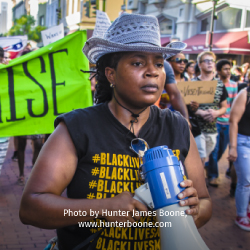

“Safety for me begins with knowing my neighbors. It is here that shared values of community are developed, needs are expressed and conflict is resolved. Safety is knowing the people in your community have each others back.” -Mary Hooks
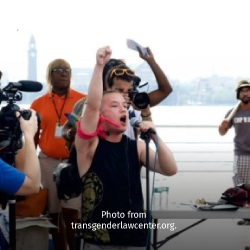
“My communities would be safe if we lived in a world where all people could exist without fear of policing, profiling, brutality or violence at the hands of the police, ICE, the medical industrial complex or misguided community members.” – Elliott Fukui



Mothers Against Senseless Killings is a group of women who use tables of food and lawn chairs to take over and cool down a particularly “hot” street corner in southside Chicago.

Imagine if, back in 1982, our federal, state, and local policymakers had assembled the U.S. public and offered us a choice between two paths that we could take over the next 30 years. Path One would involve using our tax dollars to invest in the massive expansion of our justice system and a tripling of our incarcerated population, but would not substantially improve public safety. Path Two would make the same level of investment in providing tens of millions of youth with higher-quality educational and developmental opportunities, creating millions of living-wage jobs, dramatically expanding the availability of affordable housing and first-rate healthcare, and making meaningful advances in addressing the effects of environmental degradation, while keeping the justice system at the same size. Would anyone have chosen Path One?
Over the last 30 years, at both the national and local levels, governments have dramatically increased their spending on criminalization, policing, and mass incarceration while drastically cutting investments in basic infrastructure and slowing investment in social safety net programs.
This groundbreaking report calls for immediate, concerted, comprehensive, sustained, cross-sector, collaborative philanthropic response to the growing crisis of criminalization, and outlines strategies to more effectively tackle criminalization and mass incarceration, to stop the spread of surveillance and punishment, and to meet the challenges of the current political climate.
Who Pays? The True Cost of Incarceration on Families proves that the costs of locking up millions of people is much deeper than we think. Locking up individuals also breaks apart their families and communities, saddles them with overwhelming debt, and leads to mental and physical ailments. The situation is dire, but a better approach is possible.
Crenshaw, a leading authority in how law and society are shaped by race and gender, argues that an intersectional approach encompassing how related identity categories such as race, gender, and class overlap to create inequality on multiple levels is necessary to address the issue of school discipline and the school-to-prison pipeline.
Neighborhood Funders Group and the National Committee for Responsive Philanthropy (NCRP) co-hosted “How to Creatively Fund Social Movements,” a webinar that explored how foundations can be more flexible in supporting grassroots groups and leaders. Experienced grantmakers and organizers shared strategies for responding to this movement moment’s critical need for resources to front line social change actors.
“A towering achievement, A Plague of Prisons does something rare and valuable: it provides a new way of looking at, thinking about, and analyzing old and familiar data, thereby creating fresh insights into and understanding of a social catastrophe.” -Ira Classer, former Executive Director of the ACLU
Girls and young women of color live at the intersections of sexism, racism, and other forms of oppression that prevent their full participation in our country’s future. Yet new research is helping us to better understand the barriers they face, while opening up new pathways for partnership and shared progress.
This report, released by the Center for Popular Democracy and Urban Youth Collaborative, reveals the staggering yearly economic impact of the school-to-prison pipeline in New York City, $746.8 million. In addition, it presents a bold “Young People’s School Justice Agenda,” which calls on the City to divest from over-policing young people, and invest in supportive programs and opportunities for students to thrive. New evidence of the astronomical fiscal and social costs of New York’s school-to-prison pipeline demand urgent action by policymakers. The young people who are most at risk of harm due to harsh policing and disciplinary policies are uniquely situated to lead the dialogue about developing truly safe and equitable learning environments. This report highlights the vision for safe, supportive, and inclusive schools developed by these youth leaders.
At the 2015 Representative Assembly, the National Education Association adopted NBI-B, which recognized the role that Institutional Racism plays in our society including in our schools and directed NEA both to spotlight systemic patterns of racism and educational injustice that impact students and to take action to enhance access and opportunity by demanding changes to policies, programs, and practices that condone or ignore unequal treatment and hinder student success. As part of the action required by NBI-B, NEA Governance formed a committee to address discipline in schools and the school-to prison pipeline.
Juvenile crime rates are plummeting, and the number of Americans in juvenile detention has dropped. One report shows the juvenile incarceration rate dropped 41 percent between 1995 and 2010. But school discipline policies are moving in the opposite direction: out-of-school suspensions have increased about 10 percent since 2000. They have more than doubled since the 1970s.
In what the San Francisco Chronicle called “an epic work of investigative journalism that lays bare our nation’s brutal and counterproductive juvenile prisons and is a clarion call to bring our children home,” Nell Bernstein eloquently argues that there is no good way to lock up a child. Making the radical argument that state-run detention centers should be abolished completely, her “passionate and convincing” (Kirkus Reviews) book points out that our system of juvenile justice flies in the face of everything we know about what motivates young people to change.
This report exposes the ways in which we criminalize girls — especially girls of color — who have been sexually and physically abused, and it offers policy recommendations to dismantle the abuse to prison pipeline. It illustrates the pipeline with examples, including the detention of girls who are victims of sex trafficking, girls who run away or become truant because of abuse they experience, and girls who cross into juvenile justice from the child welfare system. By illuminating both the problem and potential solutions, we hope to make the first step toward ending the cycle of victimization-to-imprisonment for marginalized girls.
Demonstrating that the current incarceration policy in urban America does more harm than good, from increasing crime to widening racial disparities and diminished life chances for youths, Todd Clear argues that we cannot overcome the problem of mass incarceration concentrated in poor places without incorporating an idea of community justice into our failing correctional and criminal justice systems.
Monique W. Morris, the co-founder of the National Black Women’s Justice Institute, offers tactics to work against damaging stigmas about black girls and women.
In February 2017, the Austin City Council voted to not do business with any company involved in the border wall. In June 2017, the NYC Pension Fund announced its divestment from private prison companies GEO Group Inc., CoreCivic Inc. and G4S Plc. Learn more about how private companies profit from almost every function of America’s criminal justice system with infographics from In the Public Interest.

We’re a national network of funders increasing resources to grassroots organizations addressing the intersection of racial justice, gender justice, community safety, and policing.
FFJ created this toolkit for funders because we believe that our collective funding strategies in housing, education, health, and jobs, will fail if we do not also divest this nation’s resources from criminalization. Our partners in the field see divesting from criminalization as critical to the work of transforming communities to be safe and secure.
Get in touch with Funders for Justice. Please send inquiries to info@funders4justice.org.
